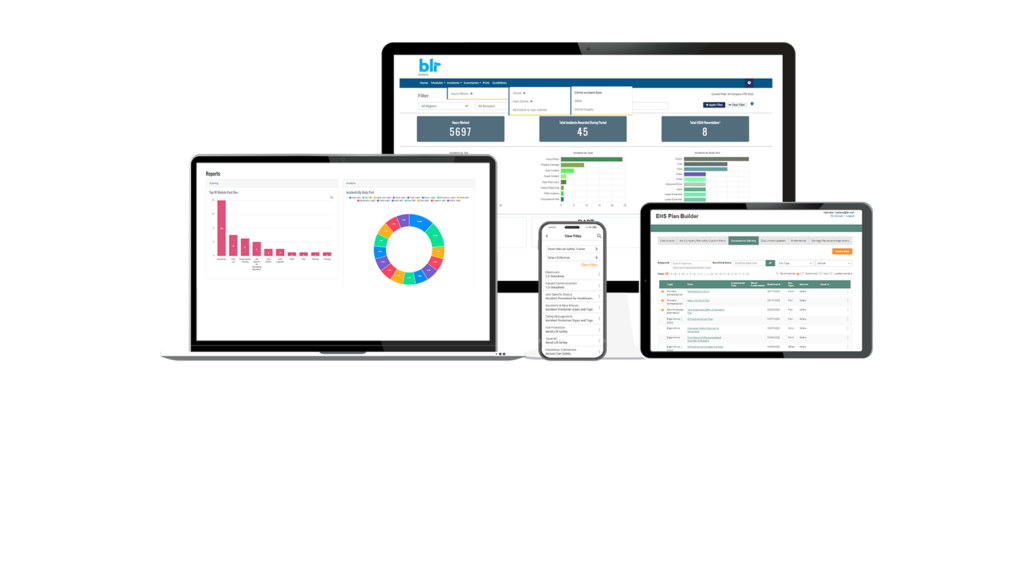
Make your EHS program work for you with lean manufacturing
Lean manufacturing isn’t about “less”; it’s about efficiency and continuous improvement. It seeks to produce excellence by focusing on highly effective activities and removing the ones that don’t add value.
Many companies relate it to the term kaizen, a Japanese term meaning “change for the better or incremental improvement.” A change in mindset must take place to transition to lean safety management, just as it does for production. Some of the ideas that need to be carried out are:
- Focusing on value and efficiency
- Eliminating waste
- Questioning conventional ideas
- Striving for continuous improvement
- Orienting workers (training)
Generally, this process ties in very closely to “lean manufacturing.” One of the basic lean manufacturing processes is a plan, do, check, act (PDCA) cycle. The more familiar manufacturers become with this process, the faster this cycle tends to move, increasing their ability to improve.
The lean manufacturing journey
After lean manufacturing begins, a company can expect to see changes in processes, physical layout, and culture.
One big piece of the culture pie is safety culture, and it has the ability to quickly improve the rest of the company. It should increase communication, processes, and profitability in a company very quickly. Safety culture and safety metrics tend to be very intimately tied, as well, so as one improves, the other will also improve.
These changes should be fueled by improvement or kaizen events that are meant to analyze processes in every department to recognize waste and eliminate it.
Consider how you can reduce:
- Square footage used in a process
- Amount of TAKT time in a product line
- Amount of time spent finding tools, parts, or materials
- Number of steps in a process
- Number of consumables used
- Materials and supplies purchased
- Number of hazards in the workplace
- Number of injuries, incidents, and near misses
EHS and lean manufacturing
Using an environment, health, and safety (EHS) management software like EHS Hero’s allows lean manufacturers to quickly identify and eliminate hazards from unsafe acts and unsafe conditions.
EHS management software gives all of the necessary tools to find trends and help eliminate them. For example, if a manufacturer is having a lot of hand injuries, they can focus resources on training and new personal protective equipment (PPE) or processes to reduce the instances of incidents. Some of the things that can be trended and reviewed are:
- Injuries by body part
- Injuries by event
- Injuries by source
- Unsafe conditions
- Unsafe acts
- System or process failure
Waste identification and lean
An easy way to get started on a lean manufacturing safety program is through the waste identification and removal process. When considering each step of a potential improvement, the team should consider ergonomics, safety, and health before the step is implemented. This can help reduce the biggest waste of all: injuries.
The items to consider are posture, force output, and frequency. Lean manufacturers can protect their processes, employees, and bottom line by removing manual material handling and manual lifting. Removing tasks that involve pinching mechanisms, manual pushing, and manual pulling will also do wonders to eliminate risk and increase efficiency.
An easy way to identify these types of hazards is by having employees perform and review job hazard analyses before and during the improvement process. Lockout/tagout procedures help standardize the procedures that involve machines and prevent unnecessary injuries.
Bring it all together
Manufacturers need to complete the following tasks to create a successful EHS-focused lean manufacturing system that will drive safety culture and leverage lean practices:
- Regularly scheduled hazard recognition training. The Occupational Safety and Health Administration (OSHA) 10 class is also a great place to start.
- Standardized work. Lean manufacturers need well-documented, standardized work that starts at the production line and includes understanding the EHS program expectations.
- Cross-company involvement. Communication is key here, as the EHS team, floor-level workers, and managers may all have different input from their perspective that helps improve the process.
Continuous improvement and lean are meant to facilitate improvement. To manage change and keep it positive, manufacturers should focus on creating change. Learning about lean manufacturing, health, and safety benefits the ideals of this process.



